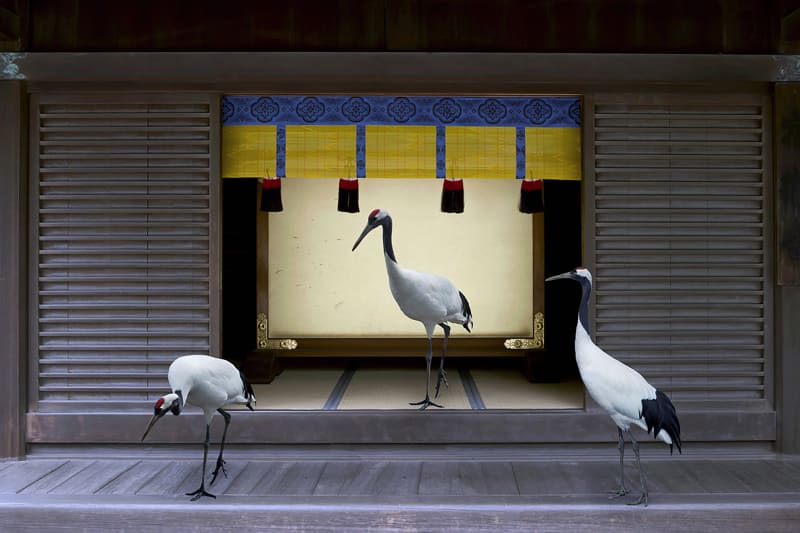Since 2012, Karen Knorr has been exploring and learning about Japanese heritage culture travelling to Tokyo, Kyoto, Nara and Ise several times during different periods of the year. She continues to travel there in order to capture the transience of the seasons which are viewed through the structures of temples and shrines. After the 2011 Tohoko earthquake and tsunami which killed over 15000 people in Japan, Knorr felt compelled to visit Japan out of friendship and a deep feeling of sympathy. She has been working on two series which complement each other yet use distinct approaches: Karyukai focuses on portraiture with waka (poetry) composed by the sitters and Monogatari places animals and people on architectural sites which serve as witnesses of an ancestral legacy that still pervades Japanese life today.
Karyukai is a series of portraits of women in traditional kimono dress created in collaboration with artists, models and friends. They refer to ukiyo-e (japanese term meaning « pictures of the floating world ») representing bijin-ga (pictures of beauties) which are found in Japanese screens and prints. The photographs are accompanied by haikus composed by the women sitters and printed on to the surface of the portraits similar to the temple prints of poets that Karen Knorr found in the Blue Lotus temple in Kyoto.
Monogatari, a new series following from Fables (2004-2008) and India Song (2008-2010) in its methodology considering animal life and cultural heritage this new series refers to Japanese heritage and myth. Animals appear on elegant architectures that Knorr has discovered in the Tale of Genji, famous modern novel written by Murasaki Shikibu, a courtesan from the Heian era, over the course of the 10th century. These temples are still visible throughout Kyoto and a lot of them contain gorgeous golden screens painted by the famous Kanō school of painters.


